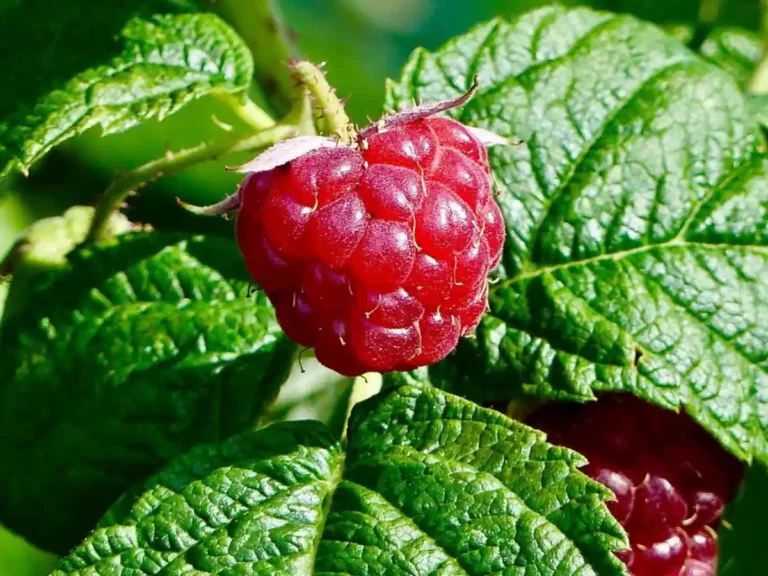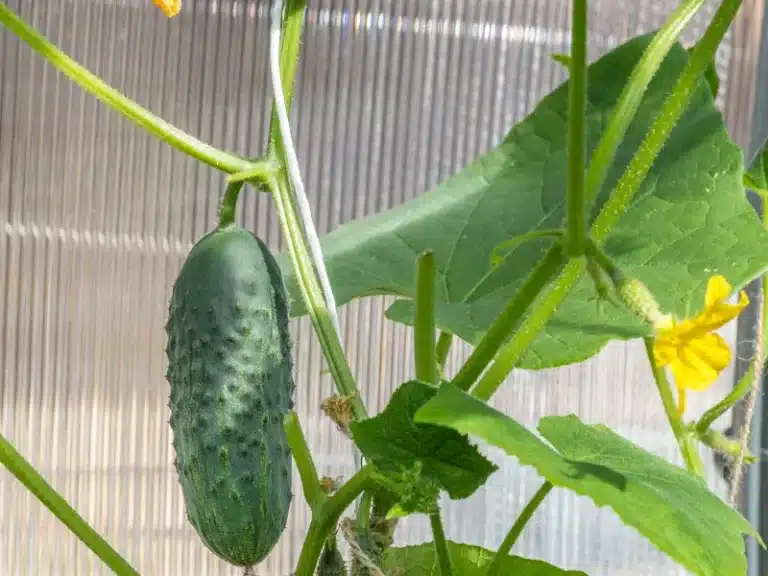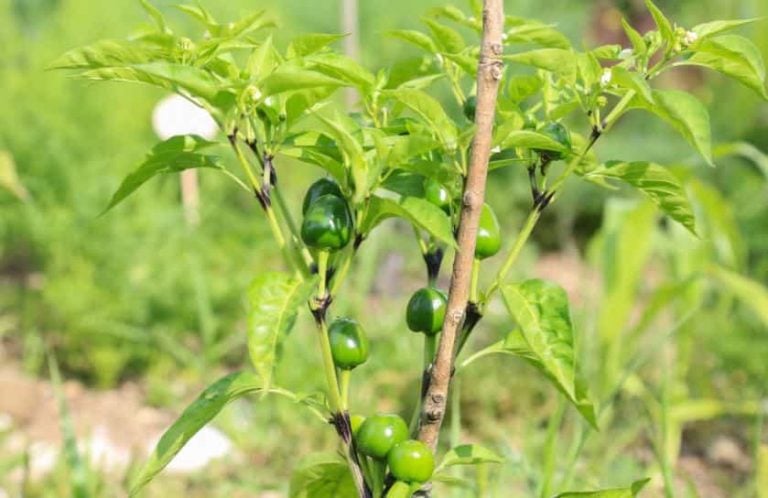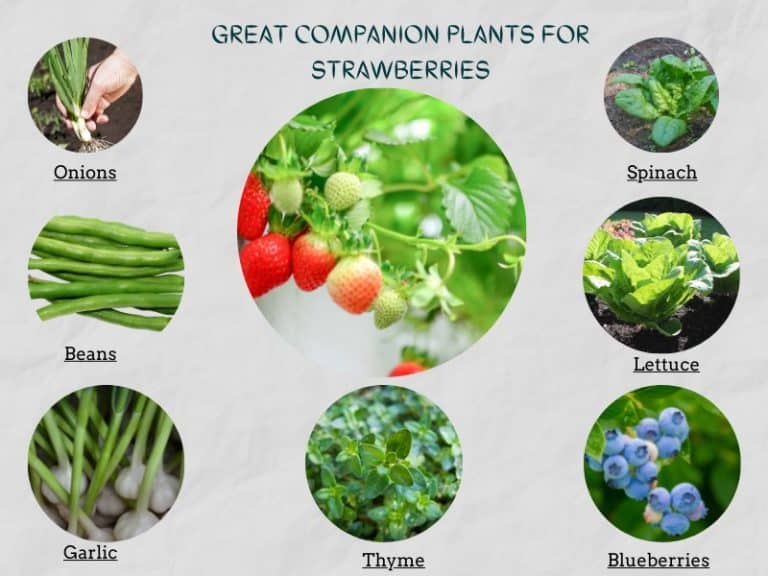8 Great Companion Plants for Leeks
Leeks (Allium ampeloprasum var. porrum) are a tasty vegetable belonging to the onion family. They’re great at deterring carrot fly, aphids, and cabbage worms. I recommend growing leeks with plants that can benefit from their pest control abilities or those that grow in the same conditions.
You can pair leeks with carrots, rosemary, celery, nasturtium, beets, marigolds, chamomile, and spinach. All vegetables of the allium family including onions, garlic, and shallots are also good companions for leeks because of their similar growing requirements.
I’ve explained their benefits and planting guide in detail below.
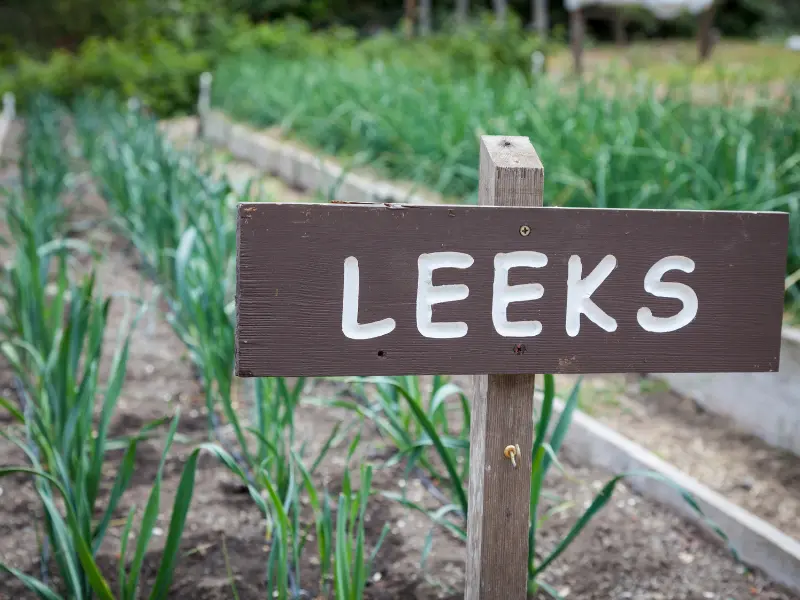
8 Best Companion Plants for Leeks
Leeks grow stiff and upright shoots, so they don’t necessarily need to be paired with plants that will offer support. However, there are many benefits to be realized from pairing leeks with other garden plants, such as improved soil fertility, drainage, pest resistance, and flavor.
Here are great plants to pair with leeks in your garden:
| Companion | Image | Benefits |
|---|---|---|
Beets |
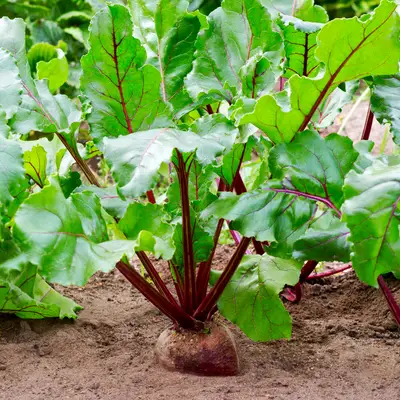 |
|
Rosemary |
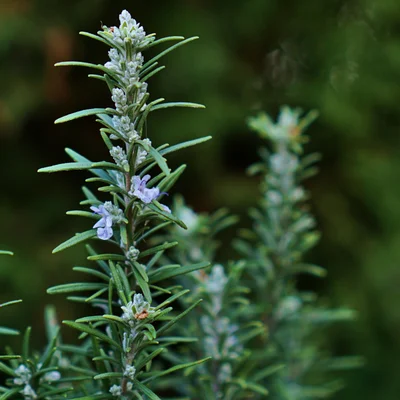 |
|
Celery |
 |
|
Nasturtium |
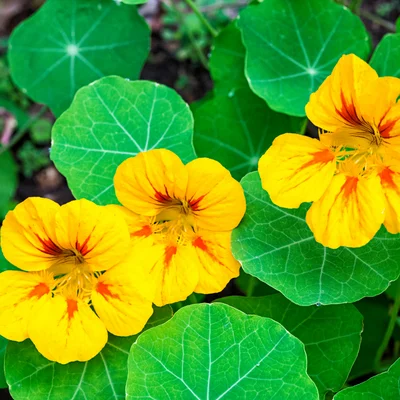 |
|
Carrots |
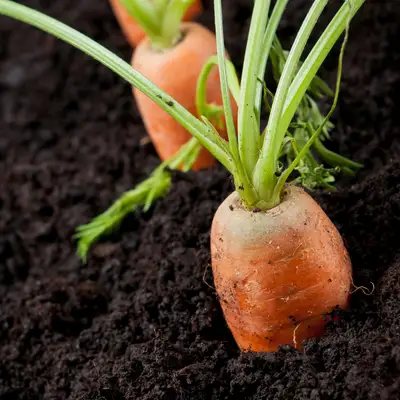 |
|
Marigolds |
 |
|
Chamomile |
 |
|
Spinach |
 |
|
1. Beets
Consider pairing leeks with beets if you have a small garden and want to make the most out of the little garden space available. The latter is a root crop that, like leeks, prefers to grow in well-draining, fertile soil, full sun, and lots of moisture.
Leeks help to keep beets free of pesky pests that feed on beet greens, such as aphids and flea beetles.
Conversely, the taproot of the beet plant, commonly known as beetroot, helps to break down heavy soil as it grows downwards into the ground. This helps leeks which grow better in well-draining, moderately loose soil.
2. Rosemary
Rosemary is an aromatic herb with a pine-like aroma that attracts natural pest deterrents like bees that frighten aphids and caterpillars in leek gardens.
Pairing leeks with rosemary also makes the garden more diverse, aesthetic-wise. The blue flowers and needle-thin rosemary leaves nicely complement the white shaft and thick green shoots of leeks.
Pro tip: Just like rosemary, thyme is another aromatic herb known to enhance the flavor of leeks when used as a companion plant. You can, therefore, use it as an alternative companion plant for leeks.
3. Celery
You can pair celery with leeks because they both thrive in well-draining, nutrient-rich soil, and sunny conditions. Additionally, both are planted by trenching them in, making them easy to plant simultaneously.
Celery’s large taproot helps to loosen the soil, allowing moisture to pass through more easily. This is beneficial to leeks, which require well-draining soil to thrive.
On the other hand, leeks have a strong odor that keeps celery free of harmful pests like leaf miners, carrot root flies, and aphids.
Pro tip: When inter-planting leeks with celery, plant them into trenches, not holes, with a spacing of 2-6 inches between the plants.
4. Nasturtium
Nasturtium spreads across the ground as it grows, making it an excellent groundcover plant. Since leeks require a lot of moisture, inter-planting them with nasturtium plants can help minimize moisture loss through evaporation on hot days.
Nasturtiums also form a dense shade due to their lateral growth, suppressing weeds in the process. Common weeds that can affect the health of leeks include nutsedge, Canada thistle, and milkweed.
Also, nasturtium is a flowering plant that attracts beneficial insects like ladybugs that feed on insect pests. It is also a trap crop for pests like aphids, which prefer it over other plants like leeks.
5. Carrots
Carrots are the best companion for leeks if you’re looking to repel harmful pests. When planted alone, leeks are susceptible to leek moths and onion flies. However, these pests become much less of a problem when inter-planted with carrots.
Even better, the relationship between leeks and carrots is symbiotic, as the potent smell of leeks repels rust flies that attack carrots, while carrots repel leek moths.
Additionally, carrots and leeks can be densely planted (close spacing) without the two plants depriving the other of sunlight and nutrients.
6. Marigolds
Marigolds are great to pair with leeks because of the many benefits their strong smell adds to the garden.
Marigold flowers have an intense smell that attracts predatory insects like lacewings and ladybugs that eventually feed on harmful pests like aphids.
Moreover, the smell also repels harmful pests that might otherwise attack other nearby plants in your garden.
Meanwhile, the spent flowers of French and Mexican marigold varieties can be dug into the soil at the end of the bloom season to kill root-knot nematodes.
Marigolds also provide decent ground cover, suppressing weeds in the process.
7. Chamomile
Allium family plants benefit from improved flavor when inter-planted with chamomile. The aromatic herb also has a scent that attracts beneficial insects like ladybugs and hoverflies. These predatory insects feed on insect pests that are harmful to leeks, such as aphids.
Chamomile also has anti-fungal and anti-bacterial properties, which could benefit other nearby plants in the garden.
Leeks also thrive in fertile soil, and companion planting with chamomile offers the perfect opportunity to enrich the soil.
Chamomile is typically pruned to prevent it from becoming leggy. You can leave the chamomile clippings in the garden to enrich the soil with potassium, calcium, and magnesium nutrients.
8. Spinach
Leeks love moisture, and spinach keeps the soil moist, making these two the perfect companion plants. Both plants also prefer nitrogen-rich soil.
The best time of the year to grow leeks and spinach is in the spring, making it easy to pair them up.
Leaf miners are a common problem on spinach plants. These pesky pests burrow inside the spinach leaves, leaving behind tan patches. You can easily keep the leaf miners away by inter-planting with leeks, which have a repellent scent.
Conversely, leeks also benefit from spinach, which has a deep, large taproot that breaks down the soil for better drainage. Remember, leeks thrive in moist but not waterlogged soil.
Note: When inter-planting leeks with spinach, ensure a spacing of at least 2 inches between every plant in the rows.
Can you grow onions and leeks together?
All members of the allium
Plants NOT to Pair with Leeks
The rule of thumb is to avoid pairing leeks with legumes such as beans, peas, alfalfa, lentils, and asparagus. Some of these legumes, such as beans, produce biochemicals that cause stunted growth in leeks while others, such as alfalfa, are allelopathic.
Asparagus has different planting and care requirements from leeks. Growing these two next to each other means one will be disadvantaged.
Here are some of the differences between asparagus and leeks that make them poor companion plants:
| Asparagus | Leeks |
| Prefer pH of 6.5 to 7.0 | Prefer pH 6.0 |
| Thrive in sandy, heavy soil | Thrive in loose, loamy soil |
| Deep root system requiring deep soil. | Have shallow roots; can thrive in shallow soil. |
| Asparagus spears die in cold conditions | Leeks are very cold-tolerant |
Other garden plants that shouldn’t be paired with leeks include cauliflower and rutabaga. These plants compete for essential nutrients with leeks, resulting in stunted growth and reduced yield.


